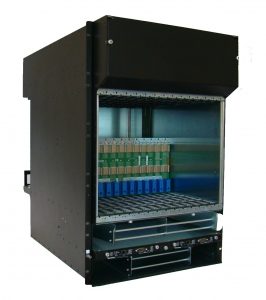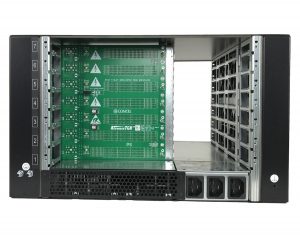
ATCA – Advanced Telecommunications Computing Architecture
ATCA open modular systems standard
Advanced Telecommunications Computing Architecture (AdvancedTCA® or ATCA) is the most robust and scalable open modular systems standard. ATCA formally designated as PICMG 3.x, represents the most extensive specification initiative ever undertaken by the PCI Industrial Computer Manufacturers Group (PICMG). Comtel together with over 100 leading companies worldwide leading the standard.
ATCA features
This comprehensive series of specifications integrates cutting-edge advancements in:
- high-speed interconnects,
- next-generation processor technologies,
- enhanced Reliability,
- High Availability (99.999% uptime),
- Serviceability (RAS)
ATCA include next-generation mobile networks (5G/6G), Internet of Things (IoT), video processing and security systems, satellite communications (SATCOM), large-scale telecom data centers, instrumentation platforms such as quantum computing, industrial and sub-nanometer semiconductor manufacturing, high-energy and nuclear physics research, and advanced radio astronomy.
Definition of ATCA Specification
The AdvancedTCA (ATCA) Base Specification defines the mechanical and electrical standards for key components of ATCA systems, including boards (blades), Rear Transition Modules (RTMs), and their corresponding chassis slots.
It also encompasses specifications for rack-mountable ATCA shelves, interconnect architecture, power and cooling subsystems, hot-swap and redundancy features, hardware platform management, and data transport mechanisms
Mechanically, an AdvancedTCA (ATCA) board measures 280 mm in depth and 322 mm in height. Corresponding to a standard 8U form factor, occupies a single shelf slot with a width of 30.48 mm (6HP). This configuration enables the installation of up to 14 blades in a 19-inch rack-mountable chassis, and up to 16 blades in an ETSI-compliant rack system.
Connectivity between blades and Backplane
Connectivity between blades and the backplane is organized into three distinct zones:
- Zone-1 for redundant −48 VDC power (up to 800W per slot) and Shelf Management signals,
- Zone-2: Contains five Advanced Differential Fabric (ADF) connectors, which interface with both the Base Interface and Fabric Interface. These connectors support up to 200 differential pairs per blade, enabling high-speed, high-bandwidth communication across the system (up to 1500Gps per slot bandwidth)
- Zone-3: Reserved for user-defined I/O and application-specific interconnects to the RTMs
Characteristic of the Backplane
The backplane is the central element of ATCA system. Providing structured connectivity across multiple functional layers tailored to different application needs. Fabric Interface signals in Zone 2 are implemented as point-to-point 100 Ω differential pairs. Ensuring robust signal integrity and high bandwidth.
Thanks to ATCA’s fabric-agnostic design, any compliant fabric protocol using 100 Ω differential signaling—such as Ethernet, InfiniBand, Serial RapidIO or PCIe—can be supported across the backplane.
However up to 15 Fabric channels can be used by each blade. Each channel allocates 8 differential pairs, subdividable into four 2-pair Ports, with up to 25 Gbps per pair.
Fabric interface supports multiple topologies:
- Dual-Star,
- Dual-Dual-Star,
- Full-Mesh,
- Replicated-Mesh, and
- custom layouts
E-Keying, managed by the Shelf Manager, dynamically resolves which fabric interfaces and backplane ports are supported by each blade.
ATCA tailored for specific applications
AdvancedTCA blades serve as modular building blocks within the ATCA ecosystem. Offering a wide range of functional roles tailored to specific application.
Consequently the domains including:
- Switch,
- Processors
- AMC carriers
- Digital Signal Processing (DSP) blades
- Accelerator blades featuring ASICs, FPGAs
- GPUs and Data acquisition blades
The initial release of the ATCA Base Specification, PICMG 3.0 Revision 1.0, was officially ratified in late 2002.
As of 2025, two dedicated PICMG technical subcommittees are actively developing the next-generation updates:
- PICMG 3.0 Revision 3.1, which will refine the ATCA Base Specification
- PICMG 3.1 Revision 4.0, aimed at enabling 200G and 400G Ethernet support for ATCA platforms.
These updates are targeted for ratification in 2026, reflecting the industry’s ongoing commitment to high-performance, future-ready modular computing standards.
ATCA – Next generation of CO7 and CO2 available – Please get in touch with our experts sales@comtel-online.com
Why ATCA is attractive for military use
- High availablity
- Modular and scalable
- High processing power
- Standardized architecture
Furthermore ATCA is increasingly being adopted for ruggedized deployments in defense and aerospace environments, where reliability and resilience are critical.
For more informations – Please get in touch with our experts sales@comtel-online.com




